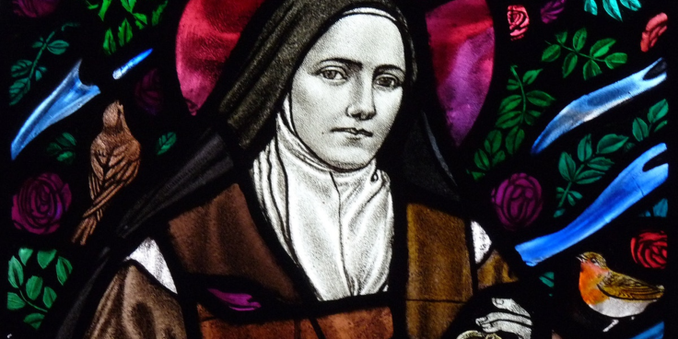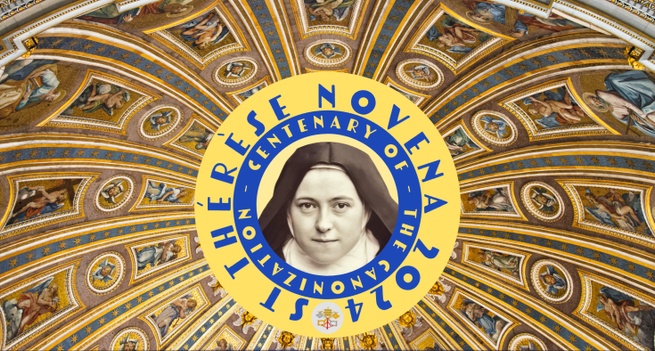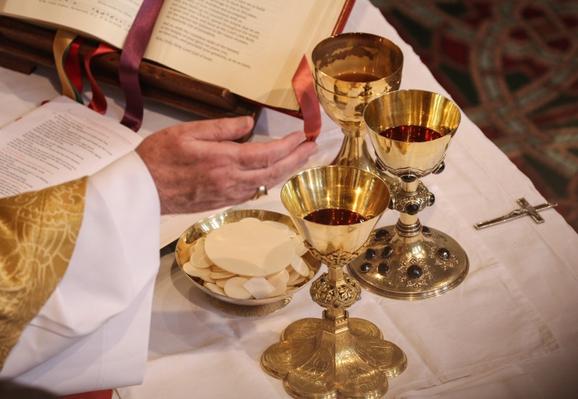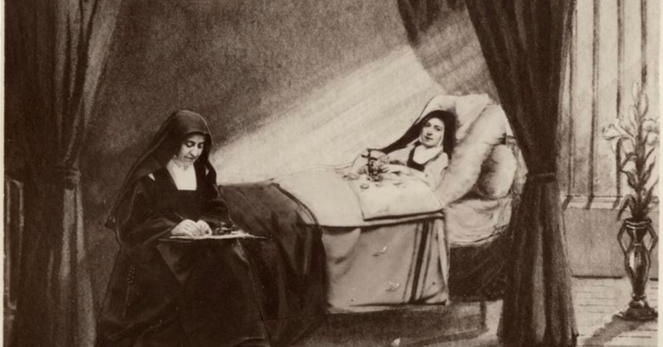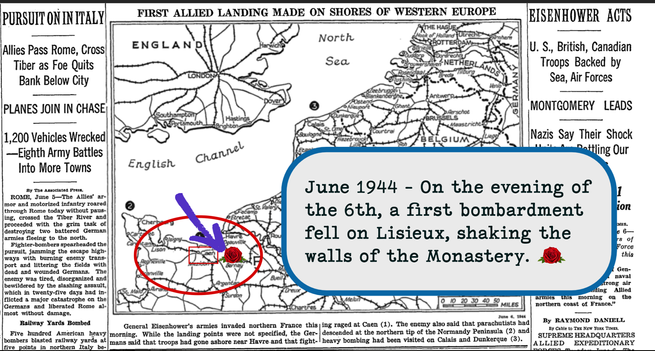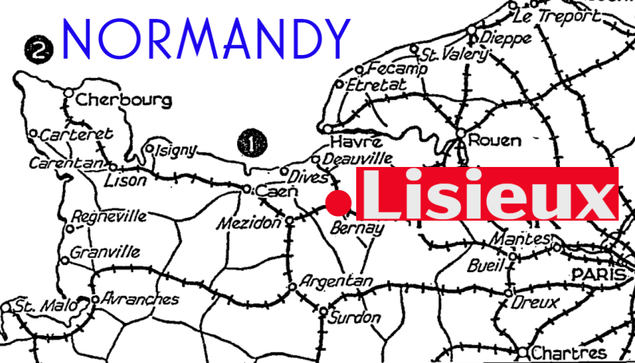Gallipoli Carmelite monastery
25 February 1910
Most Reverend Mother Agnes of Jesus,
May the grace of the Holy Spirit always dwell in the soul of Your Reverence. Amen.
I’m sorry for the unintentional delay in replying to your two precious letters. Many things have come up that made me fail in this duty, but I’m sure you, with your great kindness, will understand and forgive me.
You can imagine how happy I was to receive your writings and how fortunate I feel to be able to ask for prayers from the blood sister of dear Sister Thérèse of the Child Jesus, whom I consider such a close confidante! Even though she’s in Heaven, this beautiful soul continues to help us here on earth, especially poor sinners.
So, it won’t surprise you, my dear Mother, that our beloved Sister Thérèse, as an angel interceding before the Heart of Jesus, performed a miracle in our monastery, working through the least of this holy community.
I’m sending you the account in Italian as you requested, but please keep it private for now. There’s a large official document in Rome with the signatures of all the sisters, the bishop, and a commission of priests, including even a holy priest from the Society of Jesus!
On the night before January 16th this year, I was not feeling well. At 3:00 a.m., almost at the limit of my strength, I managed to sit up a bit in bed to catch my breath and then drifted off to sleep.
I had a dream where I felt a hand touching me, pulling up my blanket and covering me lovingly. I thought it was one of the sisters being kind to me, so without opening my eyes, I said: “Leave me alone, don’t fan me, I’m soaked. This isn’t helping. I feel like life is leaving me.”
Then a voice I didn’t recognize said: “No, my daughter, it is a good thing, and it will not take your life.”
As she continued covering me, she smiled and added: “See, the Lord uses both the inhabitants of Heaven and earth. Here are five hundred lire to pay your community’s debt.”
Taking the money, I told her that our debt was only three hundred lire, and she replied: “The rest is extra, but since you can’t keep money in your cell, come with me.”
Without answering, I thought to myself: “How can I get up, drenched in sweat like this?”
But reading my thoughts, she smiled again and said: “Bilocation will take care of that.”
Suddenly, I found myself outside my cell with a young Carmelite nun. Her habit and veil radiated a heavenly light that lit up our path. She led me to the turn room, where she opened a wooden box with the bill for our community’s debt inside and handed me the five hundred lire. I was overjoyed and amazed and bowed down to thank her, saying: “Oh, my Blessed Mother!”
But she lovingly lifted me up and said: “No, my daughter, I’m not Our Blessed Mother. I’m the servant of God, Sister Thérèse of Lisieux! Today is a feast in Heaven and on earth, for it is the feast of the Holy Name of Jesus.”
I was moved and amazed, and without knowing what to say, I exclaimed from the bottom of my heart: “My God!” but I couldn’t finish. Then this heavenly sister touched my veil, as if to adjust it, gave me a gentle, sisterly caress, and began to walk away.
“Wait,” I called out to her, “you might go the wrong way!”
She smiled angelically and replied: “No, no, my daughter, my way is safe and I was not mistaken.”
I woke up, and despite feeling exhausted, I forced myself to get up, go to the Choir, and receive Holy Communion.
The sisters noticed I wasn’t well and wanted to call the doctor. I went through the sacristy, and when the two sacristy nuns insisted I go back to bed and call the doctor, I told them that I’d had a dream that had shaken me a little, and I recounted it simply.
They then insisted that I check the wooden box, but I told them that we shouldn’t believe in dreams and that doing so was even a sin. Eventually, because of their persistence, I went with them to the turn, opened the box, and there… we found the miraculous five-hundred-lire note!
I leave the rest to your reflection!
My dear Mother, we are all so humbled by such kindness, and we eagerly await the day when our dear Sister Thérèse, our great protector, will be raised to the honors of the altar!
Could you send me the life of this Angel in Italian? It would bring me great joy, and I will be forever grateful. I also want to thank you from the bottom of my heart for the lovely picture you sent me. May the good Lord reward you abundantly for your kindness.
Please accept the warmest regards from the whole community, who entrust themselves to your prayers.
And, dear Mother, may I ask for your prayers for my own soul? I know you will pray for me, and please consider me one of your sisters (even though I am so unworthy!), as I am the same age as your heavenly sister!
Sister Maria Carmela of the Heart of Jesus,
unworthy Carmelite religious
Note: We share the text of the letter sent by the prioress of the Carmel of Gallipoli, Mother Maria Carmela of the Heart of Jesus, to Lisieux, addressed to Mother Agnès, the sister of Saint Thérèse of the Child Jesus.
Translation from the French text is the blogger’s own work product and may not be reproduced without permission.
Featured image: This is a detail of a stained glass window created by artist Sr. Margaret Agnes Rope, O.C.D. for Holy Name parish in Oxton, Birkenhead (Cheshire) England, which is one of the best-loved stained glass images of St. Thérèse of Lisieux. You can learn more about Sr. Margaret from her sisters at the Quidenham Carmel in England. Image credit: Arthur Rope / Wikimedia Commons (For the common good)
https://carmelitequotes.blog/2024/09/24/gallipoli-ltr1910/
#CarmelOfGallipoli #CarmelOfLisieux #DiscalcedCarmelites #dream #miracles #money #MotherAgnèsOfJesus #StThérèseOfLisieux #theTurn

